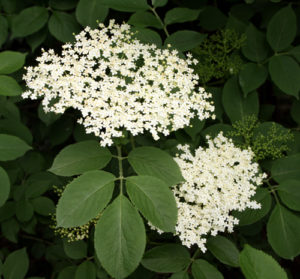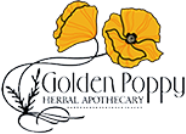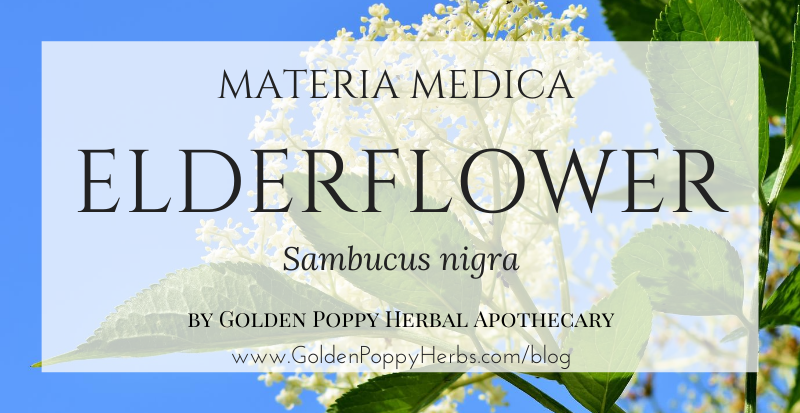LONG REVERED FOR IT'S IMMUNE PROPERTIES, THIS AMAZING PLANT HAS SO MANY USES FOR THE COLD AND FLU SEASON THAT YOU SHOULD PROBABLY PLANT ONE IN YOUR BACK YARD.
The elder tree is one of those plants you should probably have in your backyard. Not only are it's flowers beautiful, but both the blossoms and the berries are excellent remedies to have on hand for the cold and flu season and are safe for adults and children alike. (3) While the berries are helpful for both before and during the cold and flu season, the flowers are best saved for those times when you come down with something and need a little help sweating it out. As a diaphoretic herb, these little beauties help open up your pores and increase your core body temperature in a gentle way so that you can sweat out whatever illness is availing you. Increasing sweating helps to remove toxins from the body and helps to cool you down, making fevers more comfortable. Elderflower is also anti-inflammatory, anti-catarrhal and expectorant, and helps in cases of colds, sinusitis and sinus allergies to reduce inflammation of sinus tissue and allow for the movement of congestion. Research reviewed by Ulbricht et al. (2014) suggests that “herbal preparations containing elder may result in less swelling of mucus membranes, better drainage, milder headache, and decreased nasal congestion.” (5)
If you do decide to put an elder in your yard or harvest from a wild-growing plant, make sure you get the right kind of elder. Dwarf Elder, Sambucus ebulus, is known to be toxic and should not be used for herbal remedies. American Elder, Sambucus canadensis, is safe for use but is not the standard elder that is studied in clinical trials, though this doesn't mean it's not just as good as a remedy. The best way to know for sure is to have someone positively identify the plant for you, a botanist or an arborist should be able to help. If you decide to plant one in your yard, then make sure you're getting the right kind of plant from a good nursery that knows what they are doing. When wild harvesting, always make sure it's ok to harvest on the land where the plant is located and be very sure you know the area hasn't been sprayed with any chemicals that you probably don't want to be ingesting. Once you've got a plant that is safe to harvest from, pick and dry the flowers when they are blooming and save them for later in the year, just make sure to leave some behind so you can get berries later too! If you don't have any on hand, you can always get some in the store, or you can go straight to the good stuff and pick up a tin of our Cold & Flu or Fever Buster Tea.
Actions:
ELDERFLOWER MATERIA MEDICA
Latin Name: Sambucus nigra
Family: Adoxaceae (formerly Caprifoliaceae)
Parts Used: Flower (dried), berry (cooked)
Energetics: Midly sweet, misly bitter, slightly drying, warming and cooling
Native To: Europe and parts of Asia and Africa
Geographic Distribution: Asia, Africa, Europe, North America
Botanical Description
Elder tree grows from 10 to 30 feet tall with compound leaves comprised of 5-11 serrated oblong leaflets and extra leaflet on top. The leaves grow opposite each other along the stem, which is hollow and has a pithy core. The flowers are white arranged in flat panicles. The fruit are flat or slightly rounded branching clusters of glossy dark purple or blackberries that appear in late autumn.
Key Constituents
mucilage, flavonoids, volatile oil, quercetin, free fatty acids, triterpenes, phenolic acid, minerals, sterols, sugars, tannins. (1)
Sustainability Issues: None known.
Harvesting Guidelines:
Elderflower can be removed from the base of the flower cluster stalk. Only remove a few clusters from a tree, so that the tree can produce berries later in the year. Berries should be fully ripe before harvesting - do not pick green or unripe berries. Harvest the berry stalk and then separate the berries from the stems.
- Anti-inflammatory
- Antiviral
- Astringent
- Diaphoretic
- Diuretic
- Febrifuge
- Immune Boosting
- Tea: 1-2 teaspoons flowers per cup boiling water, steeped for 10-15 minutes, taken three times per day.
- Tincture: 2-4 mL (1:5 in 40%) elderflower tincture, taken three times per day.
- Syrup: 2-3 teaspoons elderberry syrup, taken 3-4 times per day.
- Chevallier, Andrew. (2000). Encyclopedia of Herbal Medicine. London: DK Publishing
- Electronic Code of Federal Regulations. Title 21. Part 182 -- Substances Generally Recognized As Safe. Available at: http://ecfr.gpoaccess.gov/cgi/t/text/text-idx?c=ecfr&sid= 786bafc6f6343634fbf79fcdca7061e1&rgn=div5&view= text&node=21:3.0.1.1.13&idno=21
- Hoffman, David. (2003). Medical Herbalism. Rochester, VT: Healing Arts Press
- Natural Medicines Database. Elderflower Professional Monograph. https://naturalmedicines.therapeuticresearch.com/databases/food,-herbs-supplements/professional.aspx?productid=708
- Ulbricht, C, Basch, E, et al. (2014). An evidence-based systematic review of elderberry and elderflower (Sambucus nigra) by the natural standard research collaboration. J Diet Suppl. 2014 Mar;11(1):80-120





